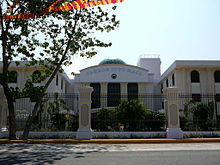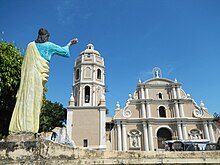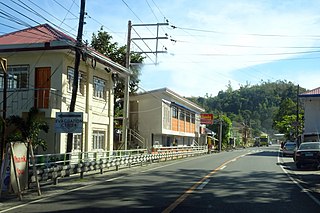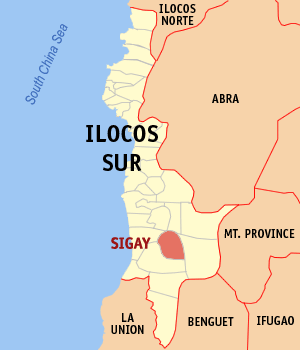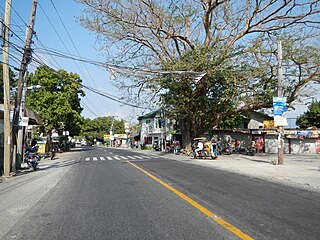This article needs additional citations for verification .(September 2013) |
Candon | |
|---|---|
| City of Candon | |
 Candon city center | |
| Nickname: Tobacco Capital of the Philippines | |
| Motto(s): Liberty, Justice and Unity | |
| Anthem: Cry of Candon | |
 Map of Ilocos Sur with Candon highlighted | |
Location within the Philippines | |
| Coordinates: 17°11′45″N120°26′56″E / 17.1958°N 120.4489°E | |
| Country | Philippines |
| Region | Ilocos Region |
| Province | Ilocos Sur |
| District | 2nd district |
| Founded | 1780 |
| Cityhood | March 28, 2001 |
| Barangays | 42 (see Barangays) |
| Government | |
| • Type | Sangguniang Panlungsod |
| • Mayor | Eric Dario Singson |
| • Vice Mayor | Kristelle G. Singson |
| • Representative | Kristine Singson-Meehan |
| • City Council | Members |
| • Electorate | 38,553 voters (2022) |
| Area | |
| • Total | 103.28 km2 (39.88 sq mi) |
| Elevation | 67 m (220 ft) |
| Highest elevation | 1,035 m (3,396 ft) |
| Lowest elevation | 0 m (0 ft) |
| Population (2020 census) [3] | |
| • Total | 61,432 |
| • Density | 590/km2 (1,500/sq mi) |
| • Households | 15,125 |
| Demonyms | Candoneño (male) Candoneña (female) |
| Economy | |
| • Income class | 4th city income class |
| • Poverty incidence | 5.60 |
| • Revenue | ₱ 634.6 million (2020) |
| • Assets | ₱ 3,212 million (2020) |
| • Expenditure | ₱ 529.9 million (2020) |
| • Liabilities | ₱ 271.9 million (2020) |
| Service provider | |
| • Electricity | Ilocos Sur Electric Cooperative (ISECO) |
| Time zone | UTC+8 (PST) |
| ZIP code | 2710 |
| PSGC | |
| IDD : area code | +63 (0)77 |
| Native languages | Ilocano Tagalog |
| Feast date | June 12 |
| Catholic diocese | Archdiocese of Nueva Segovia |
| Patron saint | John of Sahagún |
| Website | candoncity |
Candon, officially the City of Candon (Ilocano : Siudad ti Candon; Filipino : Lungsod ng Candon), is a 4th class component city in the province of Ilocos Sur, Philippines. According to the 2020 census, it has a population of 61,432 people. [3]
Contents
- Etymology
- History
- Cityhood
- Geography
- Barangays
- Climate
- Demographics
- Economy
- Government
- Local government
- Elected officials
- City seal
- Attractions
- Transportation
- Education
- Media
- AM stations
- FM stations
- Sister Cities
- References
- External links
Dubbed the "Tobacco Capital of the Philippines", the city is the country's largest producer of Virginia tobacco.
This once small resort town is known for making the heaviest and largest kalamay , a sweet and sticky snack made from sticky rice, coconut milk and sugar, in the world. This city also has a rich historical background. In its legends, the name of the city is derived from the legendary "kandong" tree which is almost extinct in the area. Its patron saint is John of Sahagún and celebrate his feast day on June 12. [5]
Candon is the center of the 2nd district of Ilocos Sur. Government district offices are all located in the city, which supports more than 100,000 residents in terms of commercial and industrial services.





